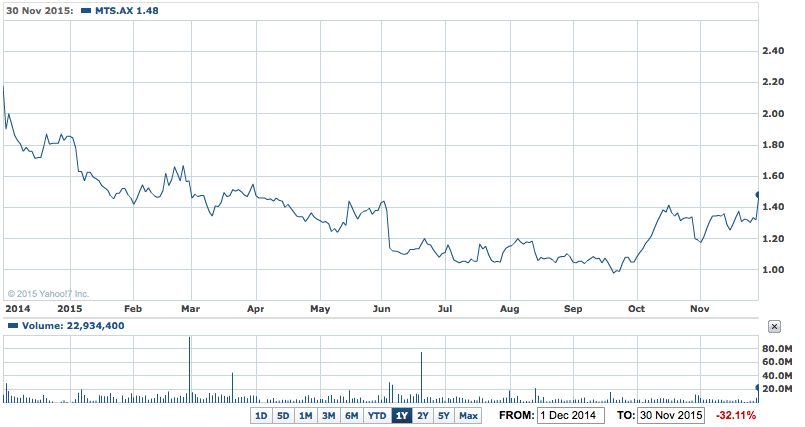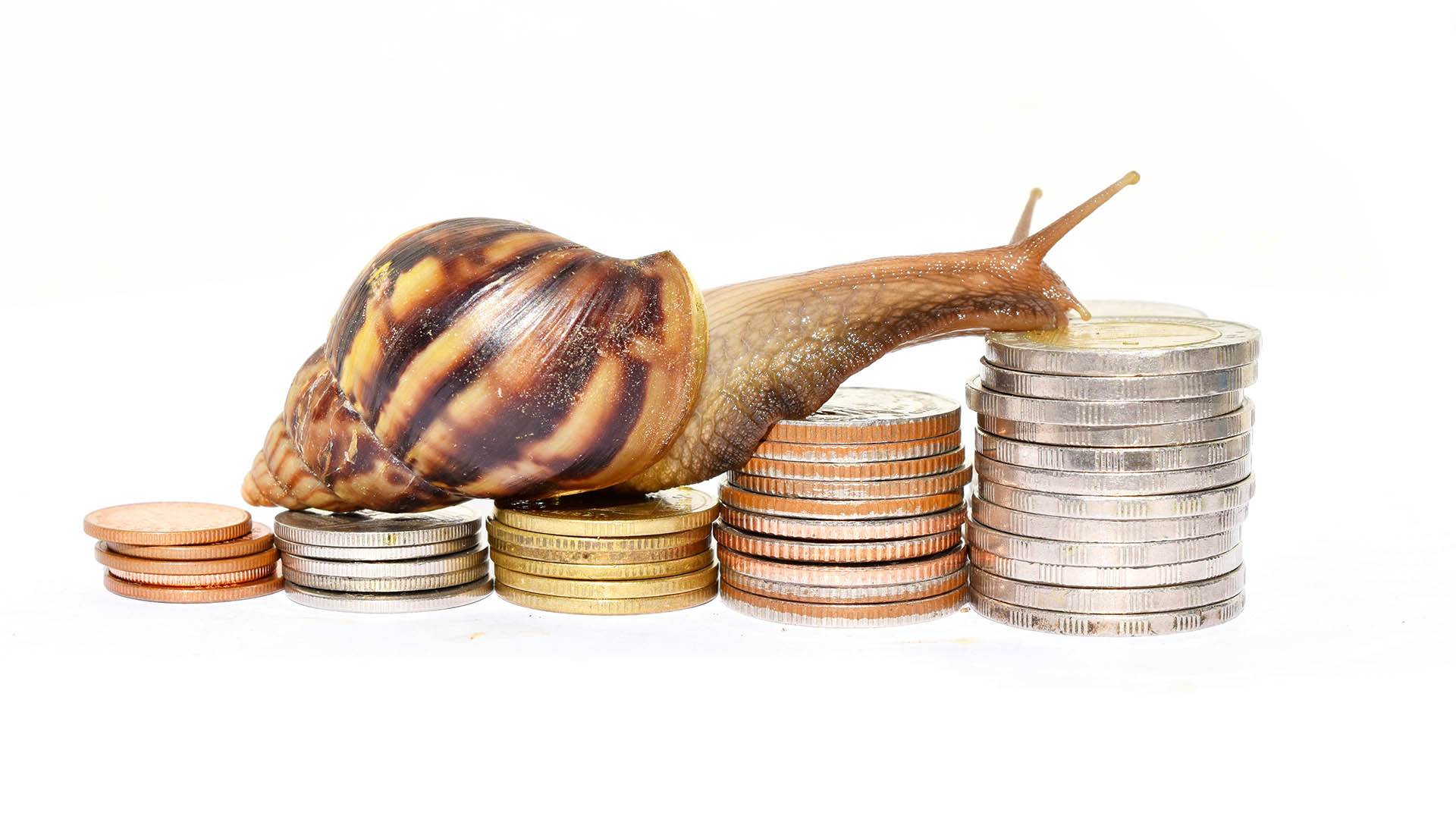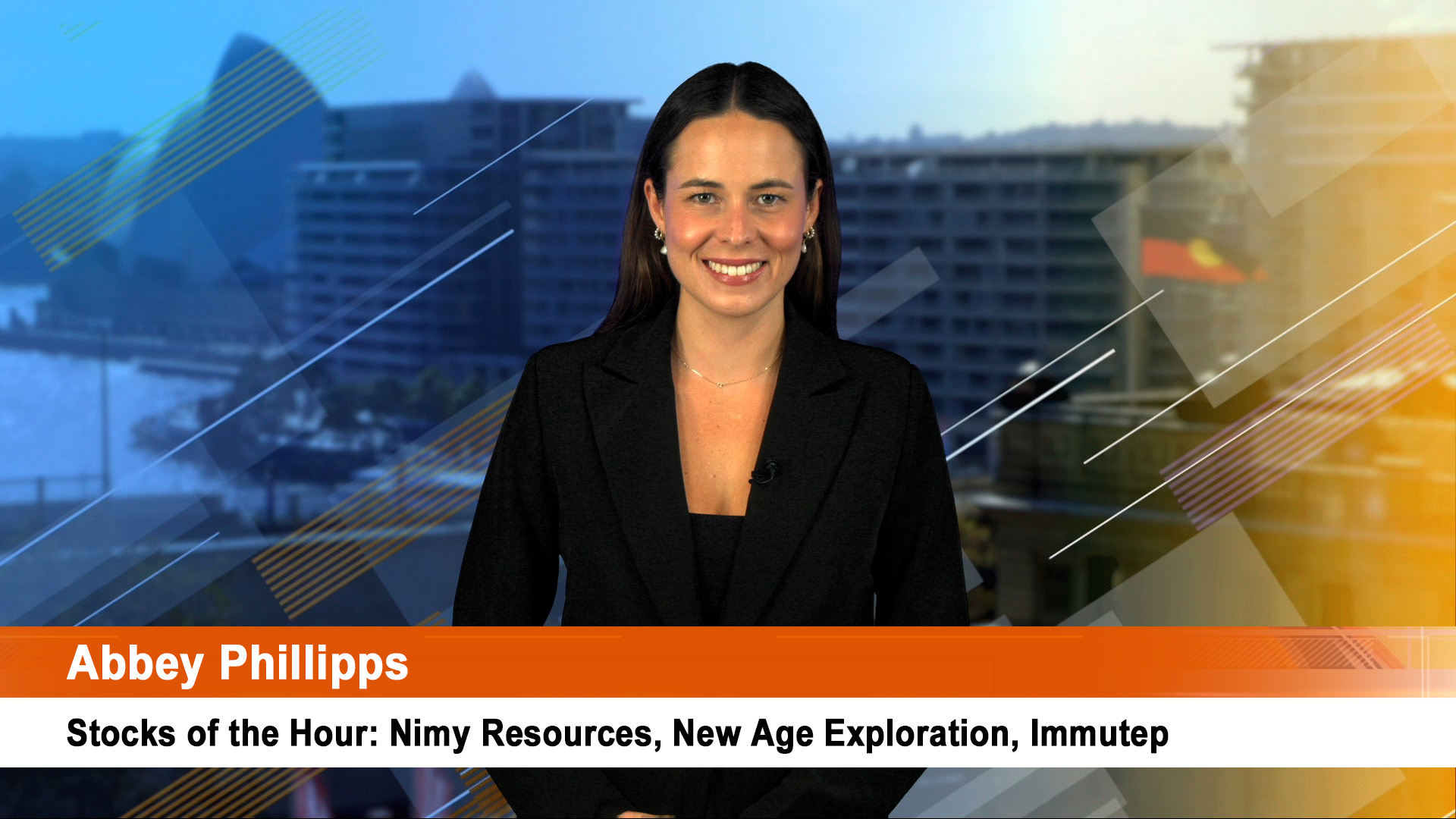While one retailer in Dick Smith (DSH) crashes, another unwanted in Metcash (MTS) had its day and seems to be on the comeback trail after the market liked the nitty gritty of its 2015-16 interim result yesterday.
Metcash shares rose to an eight-month high as the food, liquor and hardware distributor reported encouraging sales in its core IGA supermarkets after investing more than $100 million over the last two years to reduce food and grocery prices.
Investors appreciated the apparent stabilising of its previous weak sales performance in its supermarkets business and ignored a slide in underlying earnings triggered by the rising cost of the price war in supermarkets with Aldi, Woolies and Coles and the cost of tarting up its stores.
The shares were up more than 16% at one stage and ended the day at $1.48, up 12.1%.
MTS 1Y – Metcash sees ‘continuing improvement’

Metcash said its underlying net profit fell 6.1% to $86.9 million in the October-half as the cost of those price cuts and refurbishing stores crunched profit margins in that core food and grocery business. That in turned more than offset profit gains in hardware (Mitre 10) distribution.
However, food and grocery sales steadied, rising 0.7% to $4.54 billion, while same-store sales in IGA stores rose 0.6% in the half year, thanks to better support from customers.
It was the first bit of ‘good’ news from the company for the past year as it spends heavily revamping itself, cutting costs, getting rid of surplus assets (such as car parts) and trying to keep up with the aggressive Aldi, Coles and lagging Woolworths.
Food and grocery earnings before interest and tax slumped 23% to $91.9 million as the cost of the revamp and the price war whacked margins. This was after the 26% slide in food and grocery earnings in 2014-15.
Chief executive Ian Morrice said in yesterday’s statement that Metcash was still experiencing highly competitive trading conditions and price deflation, but there was evidence that the five year transformation plan was starting to deliver positive results.
"Importantly, we have seen a continuing improvement in the sales trend for the food and grocery pillar," he said.
While supermarket sales were broadly flat, the underlying trend had improved from negative 3.7% in the first half of fiscal 2015 to negative 0.4% (in other words the rate of fall in sales had slowed sharply).
Food and grocery sales would have risen about 1% if not for a hail storm in Sydney in April which destroyed the roof of Metcash’s main distribution centre at Huntingwood in Sydney’s midwest, disrupting supplies.
"The transformation plan is certainly achieving some important progress," said Mr Morrice. "The fact that we have over 900 stores actively participating in Price Match and 1200 stores in the Black and Gold private label program .. that’s incredible support, that’s what’s leading the 350 basis points uplift."
As expected, the fall in food and grocery profits more than offset those gains in liquor and hardware and group earnings before interest and tax fell 12.7% to $133.7 million.
Liquor sales rose 3.5% to $1.54 billion in a flat market and earnings rose 4% to $25.9 million, while hardware sales increased 1.2% to $530.7 million and earnings jumped 22.1% to $11.6 million (much better than the effort from Woolies Masters’ hardware business).
Convenience sales rose 3.7% to $774 million as stronger sales to petrol stations and convenience stores were partly offset by weaker sales at Campbells cash and carry outlets.
Bottom-line net profit, including earnings from discontinued operations (the car parts division), rose 20% to $122 million from $101.7 million in the year-earlier period.
Interest costs fell 47% after Metcash used the $275 million proceeds from the sale in June of its Autopro, Autobarn and Midas auto businesses to Burson Group to cut debt. In fact the lower interest bill was probably as big a factor behind the better profit as any other part of the business
Metcash is preserving cash by withholding its dividend for 18 months. From the figures, and despite the optimism of investors, you can understand that decision.













